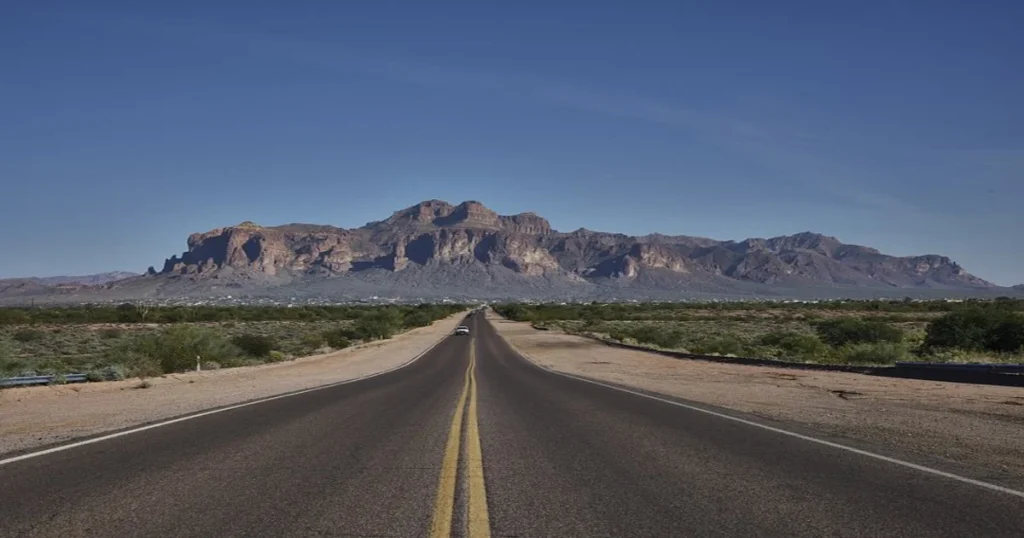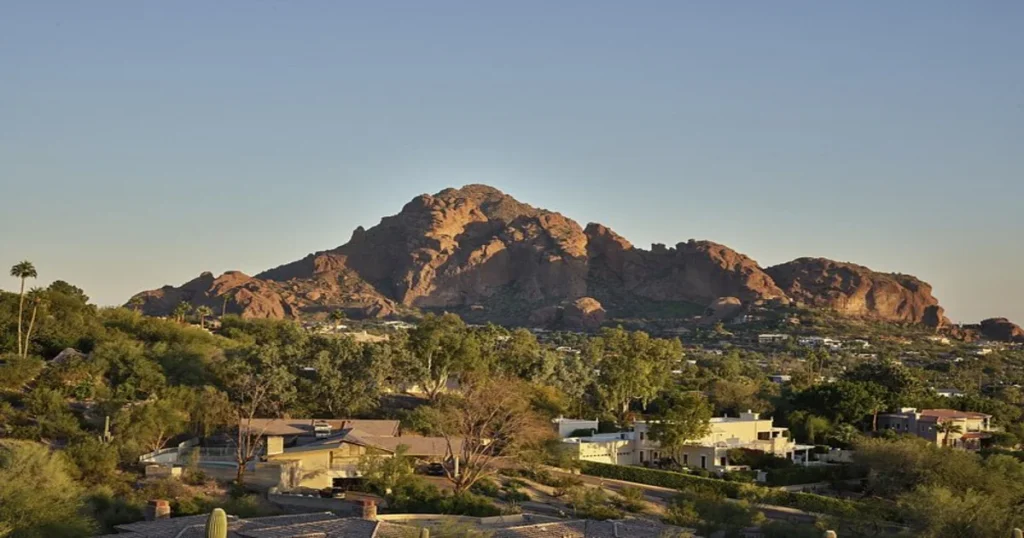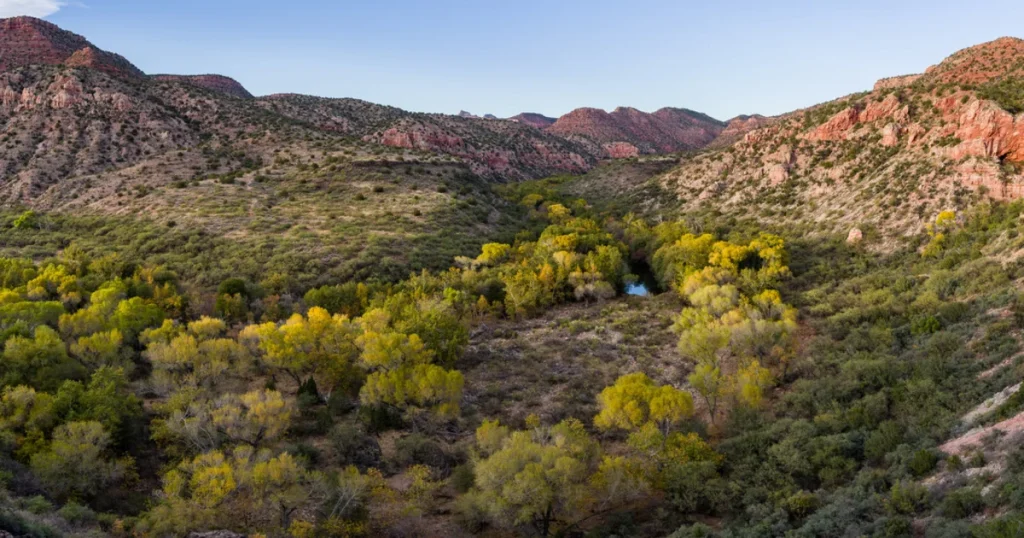The picturesque city of Prescott, located in Arizona’s central highlands, is renowned not only for its rich history and culture but also for its breathtaking natural landmarks.

However, enjoying these serene vistas and rugged terrains might seem like a distant dream for those with mobility challenges. Thankfully, the focus on the accessibility of natural landmarks around Prescott has transformed this dream into reality for many.
History and Heritage of Prescott’s Landscapes
Prescott’s landscapes are not just mere sights; they’re whispers of ancient tales and epochs gone by. The region has seen a rich tapestry of Native American cultures, each leaving behind its mark in some form or another. Native American tribes such as the Yavapai and Prescott Apache, once thrived here, shaping the very earth beneath their feet.
Additionally, conservation efforts have taken center stage in recent decades. The local community, along with governmental bodies, recognized the immense value these natural landmarks held, not just as tourist spots but as integral pieces of Prescott’s heritage. Conservation initiatives have thus been pivotal in preserving the region’s pristine beauty while ensuring they remain accessible to all.
Granite Dells: Nature’s Ancient Sculpture
Granite Dells, often dubbed the crown jewel of Prescott, is a magnificent assembly of weathered granite formations. These ancient rock outcroppings, sculpted over eons by nature’s hands, paint a captivating picture against the azure Arizona sky.
In terms of accessibility, Granite Dells does not disappoint. The city has made conscious efforts to introduce paths and trails that are accessible to everyone. Wheelchair users can explore certain areas with ease, while signages and resting spots further enhance the experience. The Peavine and Iron King trails are examples of routes designed with inclusivity in mind.
Goldwater Lake: A Serene Getaway
Tucked away amidst lush greenery is Goldwater Lake, Prescott’s answer to those seeking solace and tranquility. This man-made reservoir is a testament to how nature and mankind can coexist, creating paradises in the process.
For visitors with special needs, Goldwater Lake is equipped with accessible amenities. From fishing platforms to picnic spots, the emphasis on inclusive design ensures everyone gets to enjoy this serene getaway.
Furthermore, Prescott’s Parks and Recreation Department has taken commendable steps to maintain and regularly upgrade these facilities, reflecting its commitment to accessibility.
Thumb Butte: A Hiker’s Delight
Dominating Prescott’s skyline, Thumb Butte is more than just a geographical marvel; it’s a hiker’s paradise. Rich in biodiversity and offering panoramic vistas of the surrounding region, it’s a must-visit for nature enthusiasts.

Accessibility at Thumb Butte caters to diverse needs. While the summit might be challenging for some, alternative routes and viewing platforms ensure that everyone can experience its charm. Resting spots dot the pathways, and informational signboards provide insights into the region’s flora and fauna.
Watson Lake: Mirrored Beauty of Prescott
Cradled amidst the Granite Dells is Watson Lake, a spectacular water body that mirrors the sky and rocky cliffs surrounding it. Its calm waters and dramatic landscape make it a favorite among photographers and nature lovers alike.
To ensure everyone gets a piece of Watson Lake’s beauty, there are accessible docks and viewpoints. The city has worked in tandem with local organizations to prioritize wheelchair-friendly paths and picnic areas. Educational programs, often conducted at the Watson Lake Riparian Preserve, provide engaging experiences for all.
Peavine Trail: A Journey through Time
Winding through Prescott’s varied terrains, the Peavine Trail is not just a route; it’s a journey through time. This former railroad track, now transformed into a trail, hints at an industrial past while celebrating nature’s bounty.
Accessibility is a hallmark of the Peavine Trail. The relatively flat terrain and well-maintained pathways make it suitable for visitors of all ages and abilities. Points of interest along the route, such as ancient petroglyphs, are highlighted with interpretative signages, making the trail both engaging and educational.
Lynx Lake: Fishing, Camping, and More
Lynx Lake, with its shimmering waters and dense forest canopy, beckons adventurers and peace-seekers alike. Whether it’s fishing, boating, or simply basking in nature’s glory, Lynx Lake delivers.
Its commitment to accessibility is evident. Campgrounds are equipped with ADA-compliant facilities, ensuring a seamless experience for all. Fishing enthusiasts can rejoice as designated platforms, easily accessible, await them. The U.S. Forest Service frequently reviews and updates these amenities, further showcasing the emphasis on inclusivity.
Prescott National Forest: An Expansive Wilderness
Stretching across half a million acres, the Prescott National Forest is a mosaic of ecosystems, each more enchanting than the last. From dense woodlands to sprawling meadows, it’s a haven for wildlife and nature lovers.
The national forest, understanding the diverse needs of its visitors, boasts several accessible campgrounds and viewpoints. Trails like the Family Campground Loop cater specifically to those with mobility challenges.
Sharlot Hall Museum’s Outdoor Areas
Bridging the gap between history and nature is the Sharlot Hall Museum. Its sprawling outdoor areas, home to indigenous plants and artifacts, tell tales of Prescott’s vibrant past.
Emphasis on accessibility ensures that these stories reach everyone. The museum grounds are paved with wheelchair-friendly pathways, and resting areas are strategically placed. Exhibits outdoors, such as the Territorial Rose Garden, are designed keeping inclusivity in mind, making the Sharlot Hall Museum a holistic experience.
Acker Park: Urban Greenery at Its Finest
In the heart of the city lies Acker Park, a green oasis that promises respite from urban chaos. With its varied flora and art installations, the park is a testament to Prescott’s commitment to the environment and culture.

Its design prioritizes accessibility. Well-maintained trails, supplemented with seating areas, ensure everyone can enjoy the park. Art installations, many of which promote inclusivity, further enrich the visitor experience.
Stricklin Park: For Families and Picnickers
Nestled amidst residential areas, Stricklin Park serves as a communal backyard for Prescott residents and visitors. With open fields and play areas, it’s an idyllic spot for family gatherings and weekend picnics.
Accessibility has been at the forefront of the park’s design. Smooth pathways crisscross the park, ensuring that individuals, regardless of their mobility levels, can traverse with ease. Play areas are designed to be inclusive, with equipment suitable for children of all abilities.
Moreover, picnic spots come equipped with ADA-compliant tables and seating, a testament to Prescott’s dedication to inclusive recreation.
Granite Mountain: A Challenge for Adventurers
Rising majestically against Prescott’s horizon, Granite Mountain beckons the brave-hearted. Renowned for its challenging terrains and rewarding vistas, it’s a hotspot for adventurers seeking a thrill.
But that doesn’t mean it’s off-limits for others. Granite Mountain, in its vast expanse, houses trails and viewpoints that cater to a wide range of abilities. While certain paths might be rugged, alternate routes offer a more relaxed journey without compromising on the views.
Informational boards along these routes provide insights into the region’s geology and biodiversity, ensuring an enriching experience for all. Websites like AllTrails often detail the accessibility features of such hiking trails, aiding visitors in planning their trips.
Bradshaw Mountains: A Panoramic Spectacle
The Bradshaw Mountains, with their undulating terrains and diverse ecosystems, offer a panoramic spectacle like no other. From sun-kissed peaks to shadowy valleys, every nook and cranny of this mountain range tells a unique story.
Accessibility, even in such challenging terrains, has been addressed. Designated viewpoints, equipped with safety railings and seating, provide breathtaking panoramas of the landscape. These spots are often connected by well-maintained roads, ensuring that even those who might not trek can still experience the
Bradshaw Mountains’ grandeur. Visit Prescott provides comprehensive details about such spots, aiding tourists in their journey.
The Importance of Accessible Facilities
The drive to make natural landmarks accessible to all stems from a deeper understanding: nature, in its boundless beauty, is a shared treasure. Ensuring everyone, regardless of physical abilities, can experience this beauty, is a testament to a community’s values.
By fostering inclusive designs, Prescott doesn’t just promote tourism; it sends a powerful message about equality and rights. Accessible facilities mean families can enjoy outings without barriers, elderly citizens can revisit their favorite spots, and individuals with disabilities can explore without limitations. It’s a win-win for the community and its visitors.
Initiatives to Improve Accessibility
Prescott’s commitment to accessibility isn’t stagnant; it’s ever-evolving. Recognizing the need for continuous improvements, both governmental bodies and community organizations have come together in this mission.
Government-led initiatives, such as the ADA Transition Plan, focus on identifying and addressing barriers in public spaces. On the other hand, community-driven projects often involve volunteers who assist in maintaining trails, installing signages, and advocating for better facilities.
Collaboration with national bodies like the National Center on Accessibility ensures that Prescott remains at the forefront of inclusive design and practices.
Planning Your Visit: Best Times and Tips
Prescott’s landscapes, though breathtaking year-round, showcase different facets with changing seasons. Spring brings blooms, while fall adorns the region in golden hues. Summers are perfect for lakeside activities, and winters, though mild, offer a unique charm.

Summer Spring and Parsons Spring feed Sycamore Creek, creating a lush riparian area. Sycamore, locust, cottonwood, and other leafy trees and plants put on a colorful show in late October to early November. Sycamore Canyon is Arizona’s second-largest canyon.
The Wilderness was Arizona’s first designated Wilderness Area, originally set aside as a Primitive Area. Wilderness areas are set aside by an act of the U.S. Congress to preserve wild areas in their natural state in order to provide a primitive, natural experience and protect the beauty of these areas.
See the trail guide for Parsons Trail No. 144 to learn more about how to hike this easy trail into Sycamore Canyon Wilderness. Photo taken November 8, 2017, by Deborah Lee Soltesz. Credit U.S. Forest Service Coconino National Forest.
For those concerned about accessibility, it’s advisable to:
- Check weather forecasts: Some trails might be slippery post-rains.
- Refer to official park websites for real-time facility updates.
- Consider weekdays for visits; weekends might see more crowds.
Supporting Accessibility: How You Can Help
As visitors and nature enthusiasts, there’s a lot one can contribute to the cause of accessibility.
- Donating to local organizations working on inclusivity projects.
- Volunteering for trail maintenance and clean-up drives.
- Spreading the word about accessible facilities, thereby promoting responsible tourism.
Active participation ensures that Prescott’s efforts are not just sustained but amplified, paving the way for a more inclusive future.
Frequently Asked Questions:
In this section, we will be delving into some of the most common inquiries and curiosities that surround our topic.
Are all landmarks in Prescott wheelchair accessible?
While efforts are ongoing to make all landmarks accessible, certain terrains might still pose challenges. It’s best to consult specific landmark websites or tourist information centers beforehand.
What are the safety measures in place for visitors with disabilities?
Safety measures include sturdy railings, well-maintained pathways, emergency helplines, and regular patrols.
Are there guided tours available for those with special needs?
Yes, many organizations in Prescott offer specialized guided tours catering to specific needs.
How can visitors provide feedback on accessibility features?
Most landmark websites and parks have feedback forms. Additionally, local tourism offices welcome suggestions and feedback.
Conclusion
Prescott’s undying allure lies not just in its natural wonders but in its heartwarming embrace of all its visitors.
By championing the cause of accessibility, Prescott ensures that its treasures, from serene lakes to rugged mountains, can be relished by everyone. Here’s to many more adventures in this inclusive haven!



Leave a Comment
You must be logged in to post a comment.